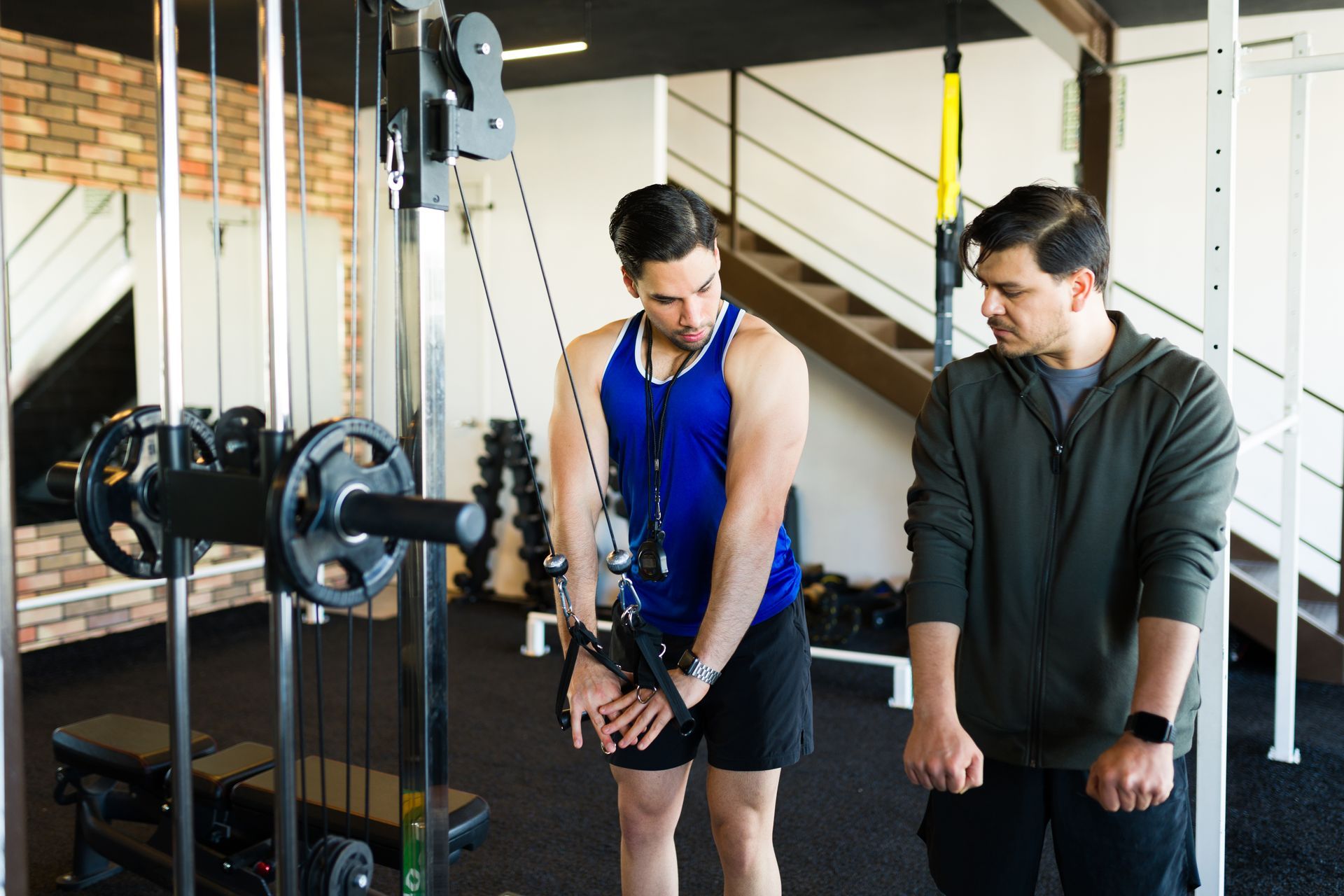April 7, 2023
What to Eat BEFORE And AFTER a Workout
What matters in pre and post-workout nutrition? Nashville personal trainer, Jim Cipriani lays it all out in this article!

Working out regularly is essential for maintaining a healthy lifestyle. However, it's not just the physical activity that's important.
Your diet also plays a crucial role in achieving your fitness goals.
What you eat before and after a workout can have a significant impact on your performance, recovery, and overall health.
In this article, we'll explore the best foods to consume before and after exercise to maximize the benefits of your workout.
Whether you're a seasoned athlete or a beginner, this guide will provide you with valuable insights and tips to help you fuel your body effectively.
What Happens During a Workout?
When you exercise, your body goes through a variety of changes to meet the demands of physical activity.
Your heart rate increases, your breathing becomes faster, and your muscles work harder.
Additionally, your body uses stored energy to fuel your movements.
All of these processes require a significant amount of nutrients and energy, which is why proper nutrition is crucial to support your body during, and after a workout.
Without the right nutrients, your performance may suffer, and your body may struggle to recover after exercise.
Proper nutrition can help ensure that you have the energy, endurance, and strength to achieve your fitness goals and stay healthy.
The 3 main things we need to pay attention to are:
1. Micro muscle tears
2. Energy resources used
3. Sweating
Let’s discuss each of those.
Muscle Protein Breakdown
During a workout, micro muscle tears can occur as a result of the physical stress placed on the muscles.
These small tears in the muscle fibers are a natural part of the muscle-building process and are necessary for muscle growth and repair.
When the body repairs these micro tears, it builds new muscle tissue, making the muscle stronger and more resilient.
While micro muscle tears are a normal part of the muscle-building process, proper post-workout recovery is crucial.
Proper nutrition, rest, and recovery can help ensure that your body has the resources it needs to repair and rebuild muscle tissue, reducing the risk of injury and helping you achieve your fitness goals more effectively.
Energy Production
During a workout, the body uses muscle glycogen to provide energy for the movements.
Muscle glycogen is the stored form of glucose, which is the primary fuel source for the body.
When you exercise, your body's energy demands increase, and it relies on stored energy to power your movements.
This stored energy is broken down into glucose and transported to the muscles through the bloodstream.
Once in the muscles, the glucose is converted to energy through a process called glycolysis.
Consuming the right nutrients before a workout can help ensure that your body has enough glycogen to meet the demands of physical activity, reducing the risk of fatigue and allowing you to perform at your best.
Sweating
During a workout, sweating occurs as a result of the body's efforts to regulate its temperature.
Sweat is primarily composed of water, but it also contains essential micronutrients such as sodium, potassium, and magnesium.
These minerals are essential for proper muscle and nerve function and are lost through sweat during exercise.
If these micronutrients are not replenished through proper nutrition, it can lead to deficiencies that can impact your performance and overall health.
While more tracking in your nutrition plan is required to ensure adequate amounts of protein and carbohydrates, that is rarely the case for micronutrients.
In general, consuming a variety of different whole foods is the best way to go about giving the body the vitamins and minerals it needs.
The secret to nailing micronutrient balance is to have diversity in your nutrition and use salt for your main meals.
What To Eat Before a Workout
A balanced meal that contains a mix of protein, carbohydrates, and fats is an excellent choice for a pre-workout meal.
Protein provides the building blocks for muscle tissue, while carbohydrates and fats provide the energy needed to power your movements.
However, it's essential to give your body enough time to digest the food before you begin exercising.
Consuming a meal too close to your workout can lead to digestive discomfort and may impact your performance.
It's recommended to consume your pre-workout meal at least 90 minutes before your workout, giving your body enough time to digest the bigger portion of the food and absorb some nutrients.
This can help ensure that your body has the energy and resources it needs to perform at its best during your workout.
My favorite pre-workout meal?
I workout in the morning, so we are talking about a breakfast-like meal. And historically, without a doubt, my favorite pre-workout meal has been:
• ½ Cup of oats (dry measure)
• 1.5 scoops of whey isolate
• 1 TBSP of nut butter
• 1 Cup of Water
• Pinch of sea salt
I have also trained fasted. And I can tell you that when I feed myself first, my performance is on a different level!
What To Eat After a Workout
Post-workout nutrition is just as important as pre-workout nutrition, as it provides your body with the nutrients it needs to recover and rebuild after exercise.
Like pre-workout nutrition, a balanced meal that includes a mix of protein, carbohydrates, and fats is an excellent choice for post-workout nutrition.
Protein is necessary for muscle repair and growth, while carbohydrates and fats provide the energy and nutrients needed to replenish glycogen stores and support the recovery process.
Consuming a meal that includes all three macronutrients within 30 minutes to an hour after exercise can help optimize recovery and improve performance for your next workout.
Additionally, staying hydrated and replenishing lost electrolytes can also aid in the recovery process.
While specific nutrient requirements may vary depending on the individual and the type of exercise performed, a well-rounded, nutrient-dense meal that includes a balance of macronutrients is essential for proper post-workout nutrition.
Last but not least, it is worth mentioning that you don’t really need to consume food right after a workout if you are not hungry.
This so-called “30-minute anabolic window” is just a myth – but it is smart to AT LEAST consume some food following a workout within about two to three hours.
Conclusion
All in all, it is my experienced opinion that active individuals should have AT LEAST 2 to 3 main meals per day, consisting of a variety of whole foods, providing a balance of protein, carbs, and fats.
Pre- and post-workout nutrition does not require any specific approach or food product.
Instead, the goal is to time the meal to your workout to avoid diminished performance due to heavy digestion.
Eat a balanced meal at least 90 minutes before a workout and eat a slightly bigger meal within two hours after a workout.
Now, let’s train!





